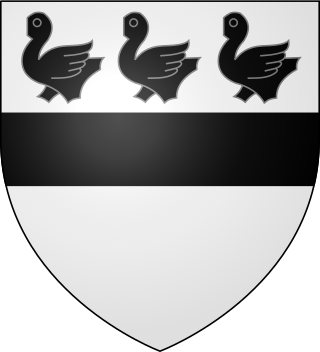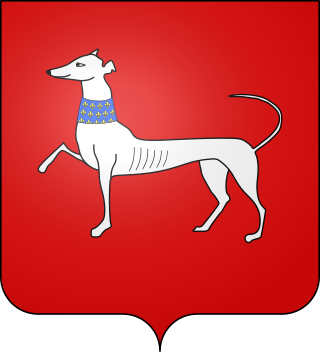Related Research Articles

France began colonizing the Americas in the 16th century and continued into the following centuries as it established a colonial empire in the Western Hemisphere. France established colonies in much of eastern North America, on several Caribbean islands, and in South America. Most colonies were developed to export products such as fish, rice, sugar, and furs.

Armand Jean du Plessis, 1st Duke of Richelieu, known as Cardinal Richelieu, was a French statesman and prelate of the Catholic Church. He became known as l'Éminence rouge, or "the Red Eminence", a term derived from the title "Eminence" applied to cardinals and from the red robes that they customarily wear.

New France was the territory colonized by France in North America, beginning with the exploration of the Gulf of Saint Lawrence by Jacques Cartier in 1534 and ending with the cession of New France to Great Britain and Spain in 1763 under the Treaty of Paris.

A viceroy is an official who reigns over a polity in the name of and as the representative of the monarch of the territory.

Louis de Buade, Comte de Frontenac et de Palluau was a French soldier, courtier, and Governor General of New France in North America from 1672 to 1682, and again from 1689 to his death in 1698. He established a number of forts on the Great Lakes and engaged in a series of battles against the English and the Iroquois.

This section of the Timeline of Quebec history concerns the events between the foundation of Quebec and establishment of the Sovereign Council.

Pierre de Rigaud de Vaudreuil de Cavagnial, marquis de Vaudreuil was a Canadian-born colonial governor of French Canada in North America. He was governor of French Louisiana (1743–1753) and in 1755 became the last Governor-General of New France. In 1759 and 1760 the British conquered the colony in the Seven Years' War.

Roland Émile Mousnier was a French historian of the early modern period in France and of the comparative studies of different civilizations.

The Duchy of Orléanais is a former province of France, which was created during the Renaissance by merging four former counties and towns. However after the French Revolution, the province was dissolved in 1791 and succeeded by five départments.
Marcel Trudel was a Canadian historian, university professor (1947–1982) and author who published more than 40 books on the history of New France. He brought academic rigour to an area that had been marked by nationalistic and religious biases. His work was part of the marked changes to Quebec society during the Quiet Revolution. Trudel's work has been honoured with major awards, including the Governor General's Literary Award for French Non-Fiction in 1966, and a second nomination for the award in 1987.

Nicolas Sanson was a French cartographer who served under two kings in matters of geography. He has been called the "father of French cartography."

The history of Quebec City extends back thousands of years, with its first inhabitants being the First Nations peoples of the region. The arrival of French explorers in the 16th century eventually led to the establishment of Quebec City, in present-day Quebec, Canada. The city is one of the oldest European settlements in North America, with the establishment of a permanent trading post in 1608.

Claude de Mesmes, comte d'Avaux (1595–1650) was a 17th-century French diplomat and public administrator. He was sent in various missions to Venice, Rome, Germany, Sweden, Denmark, and Poland by Richelieu.

The House of Beauharnais is a French noble family. It is now headed by the Duke of Leuchtenberg, descendant in male line of Eugène de Beauharnais.

Guillaume Fouquet de la Varenne was a French chef who became an important statesman in the service of Henry IV.

‘Paul François de Quélen de Stuer de Caussade, 2nd Duke of La Vauguyon' and sometimes mistakenly Paul François de Quélen de Stuer de Caussade de La Vauguyon was a French nobleman. He was governor of Cognac, after having been involved in the last campaigns of the Seven Years' War. He wrote a Portrait de feu monseigneur le Dauphin and was menin to the future Louis XVI, one of the Dauphin's sons. A peer of France, brigadier, maréchal de camp, knight of the ordre du Saint-Esprit, he was chosen to be minister plenipotentiary to the Estates General of the Dutch Republic. He later became French ambassador to Spain, knight of the Golden Fleece, temporary minister of foreign affairs in 1789, then minister of the conseil d'État of Louis XVIII in Verona. He was the main intermediary among Louis's agents in France, but became the victim of intrigues. From the Restoration onwards he was lieutenant général and sat in the peerage of France, where he was noted for his moderation. He and his wife had four children, but the Quelen line died out with his children.

Events from the year 1555 in France.

The Abbey of St. Marianus was a Benedictine, later Premonstratensian, monastery in Auxerre in the French department of Yonne in Burgundy. Established in the fifth century, it was the first monastery established in the diocese.
References
- ↑ Morris, Richard Brandon (ed.) (1970 rev.) Encyclopedia of American History Harper and Row, New York, ISBN 0-06-016481-6 p. 59;
- ↑ Harrisse, Henry (1872) Notes pour servir à l'histoire, à la bibliographie et àla cartographie de la Nouvelle-France et des pays adjacents, 1545-1700. Tross, Paris, p. 14;